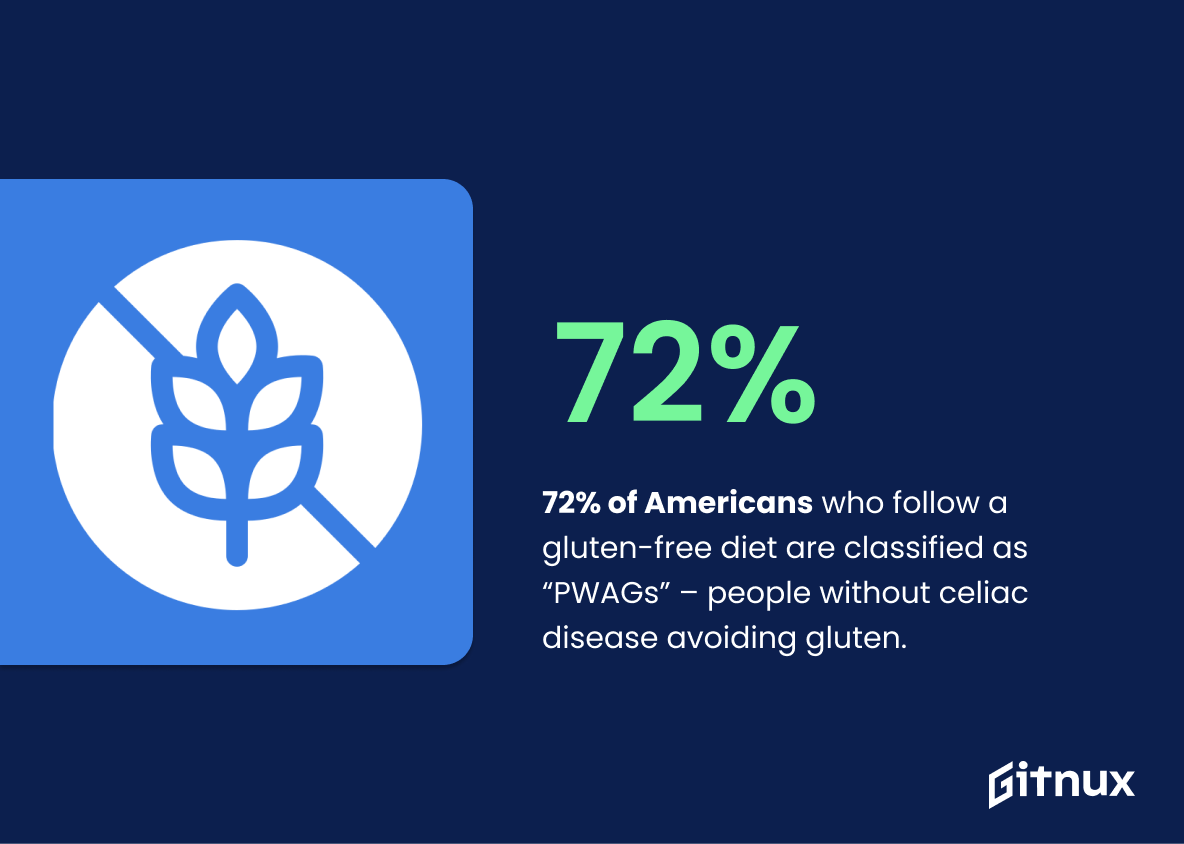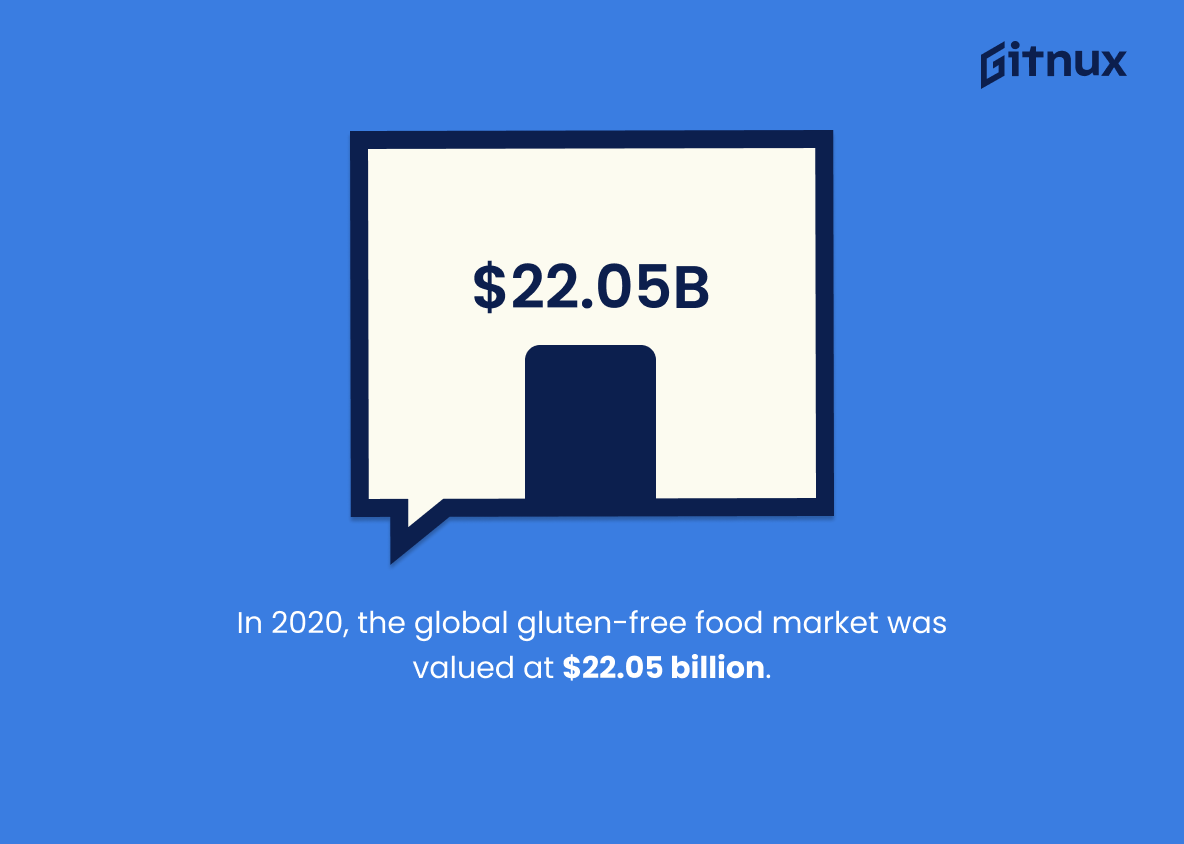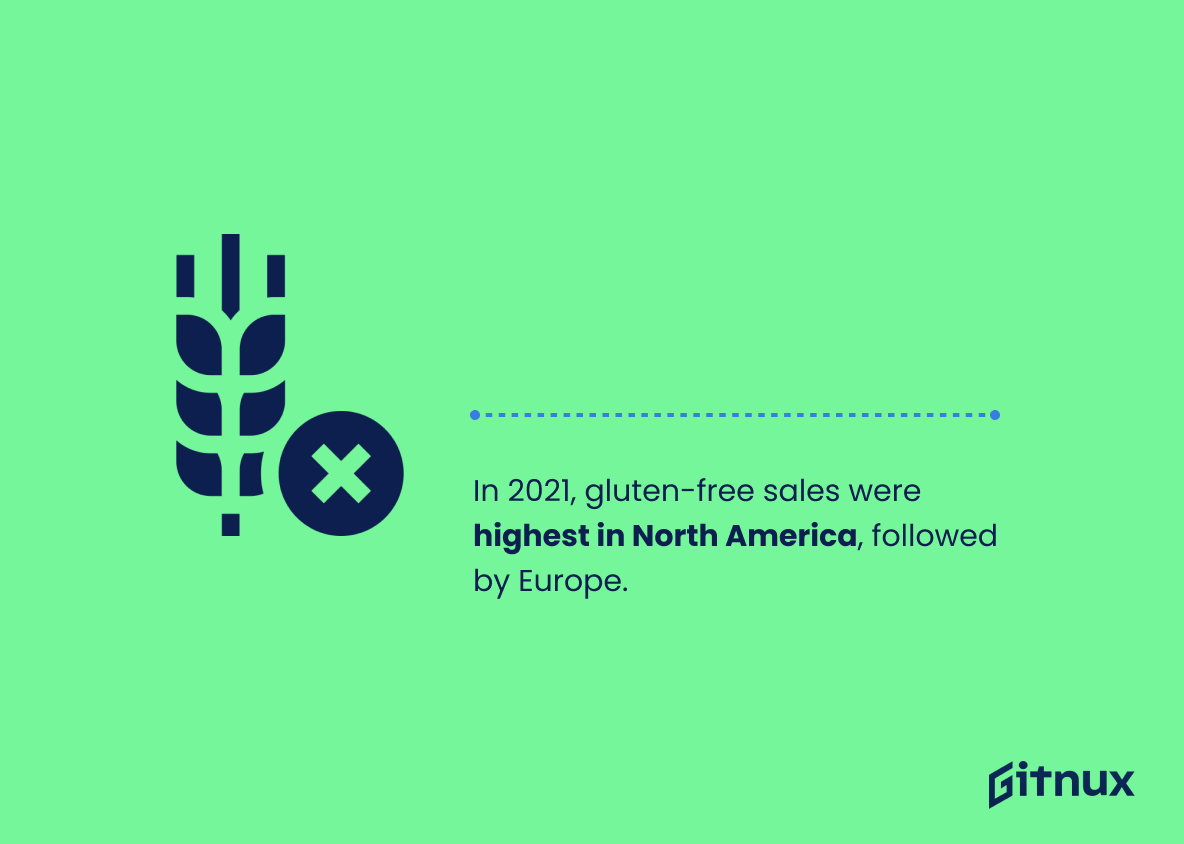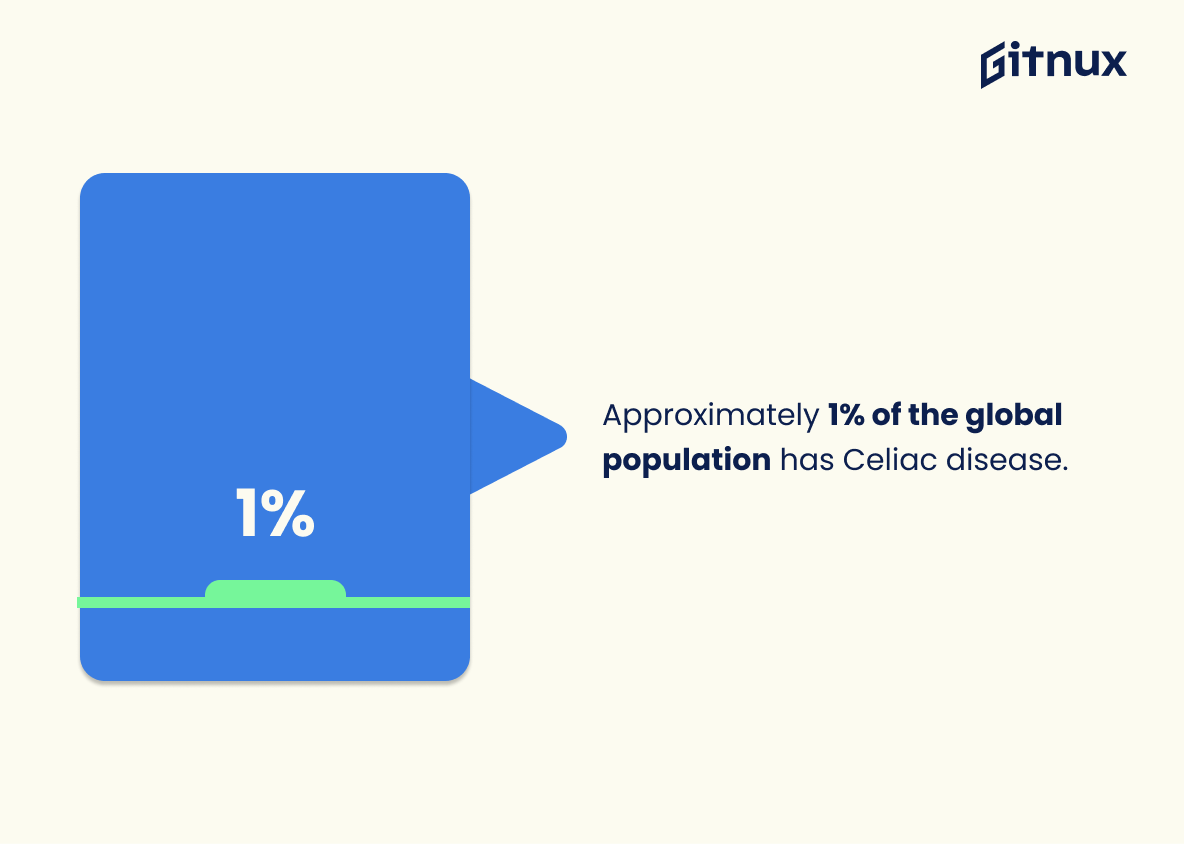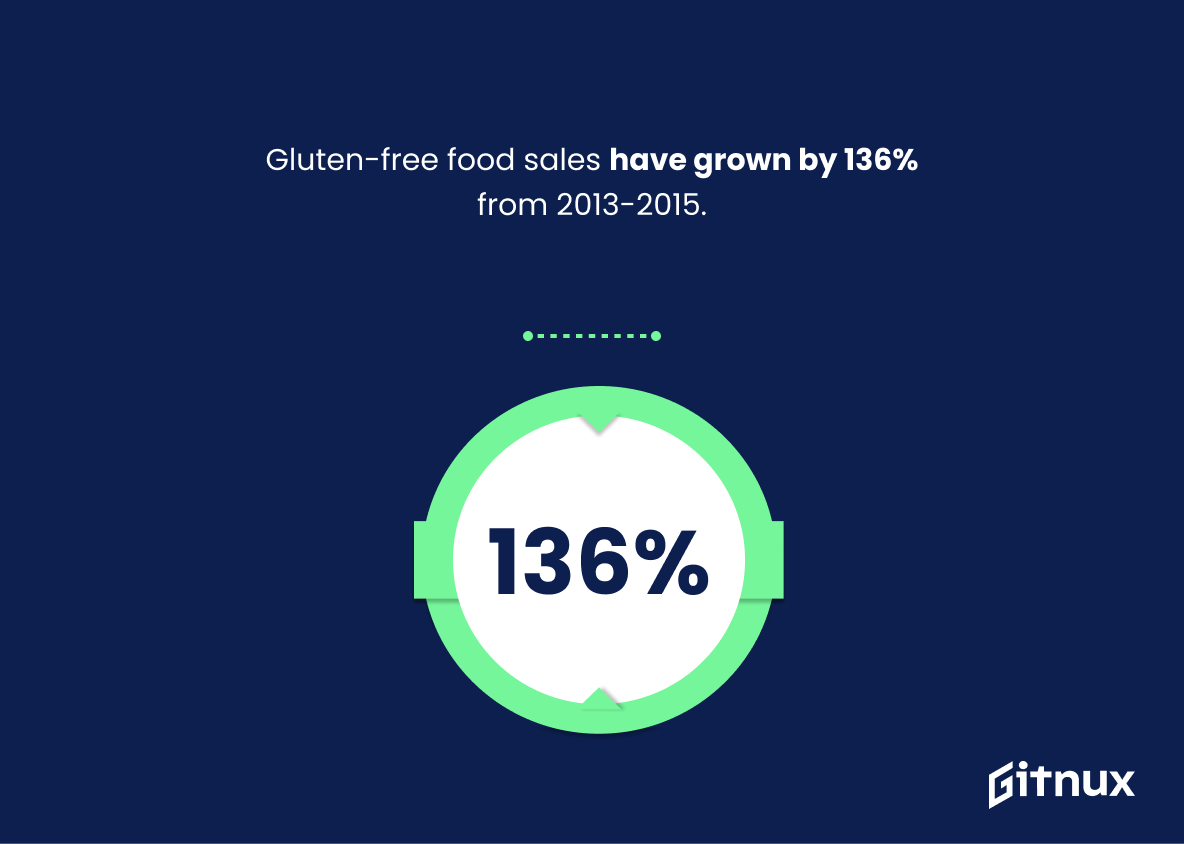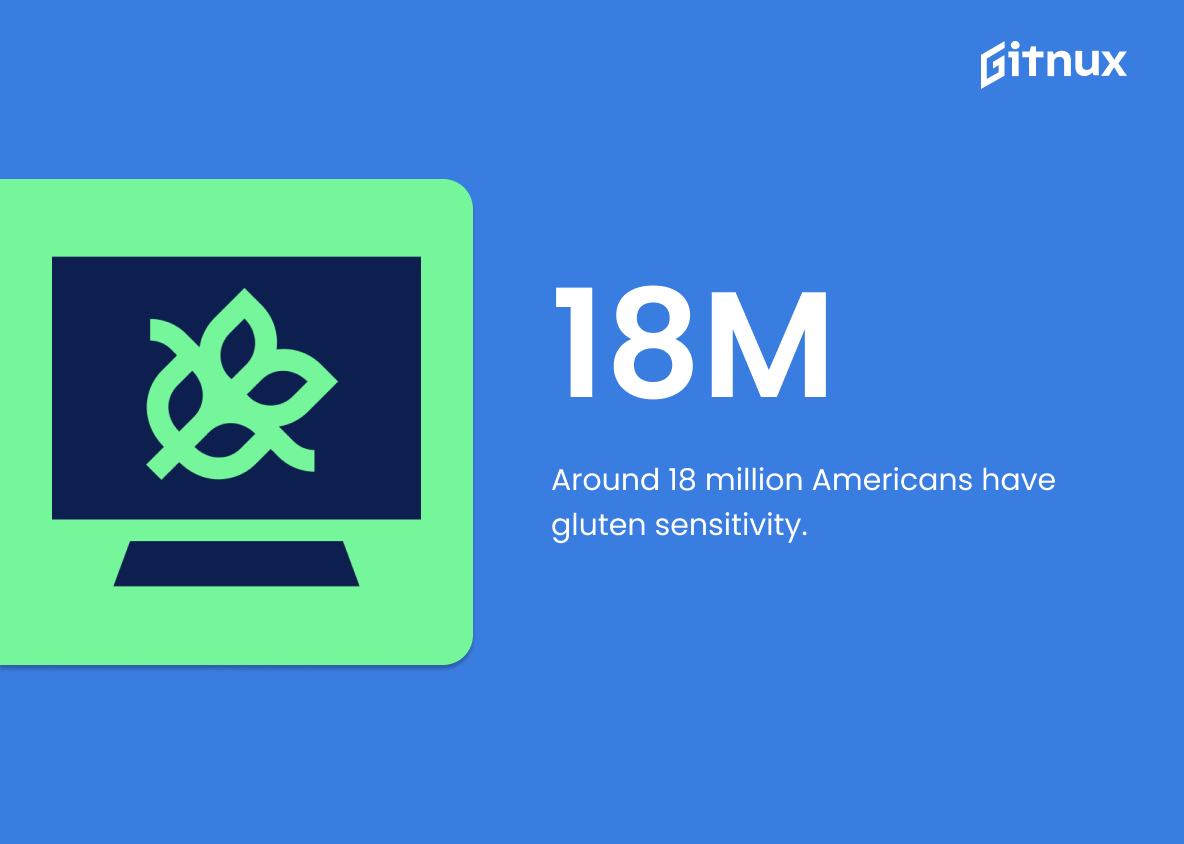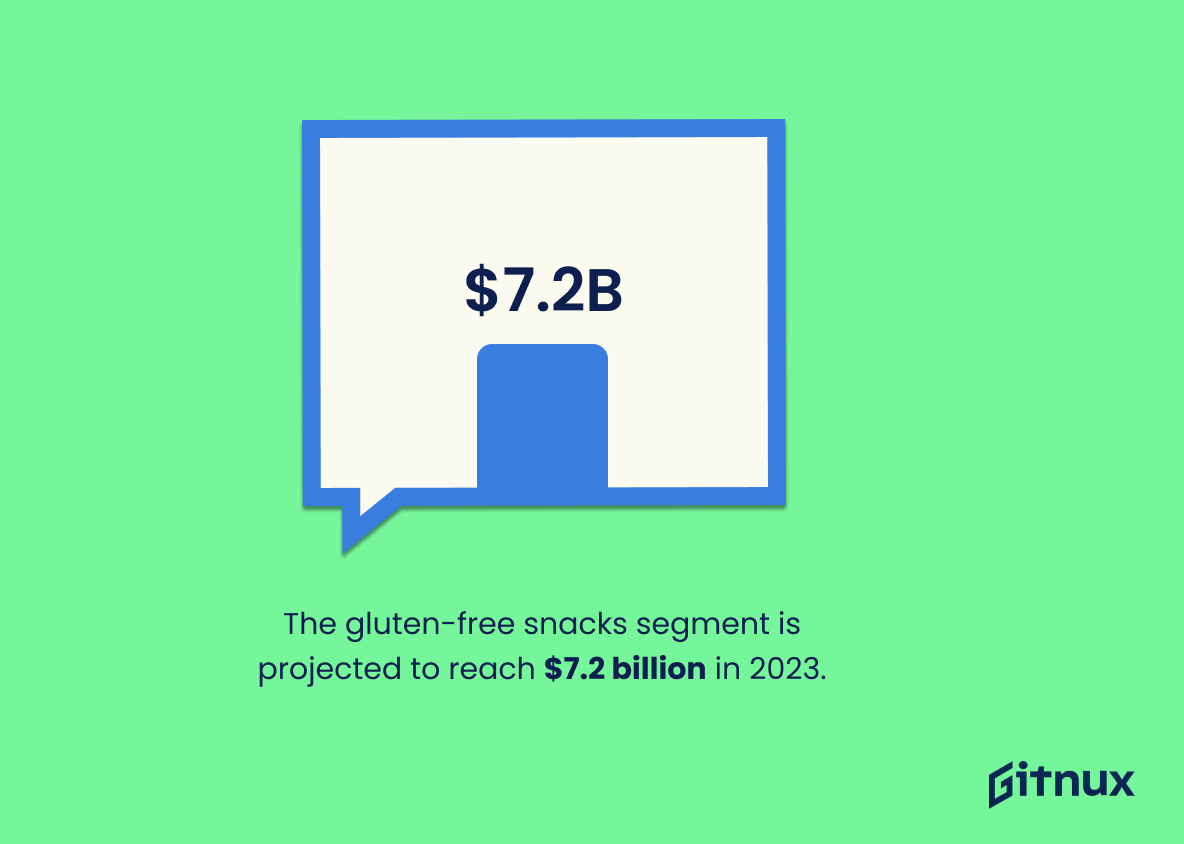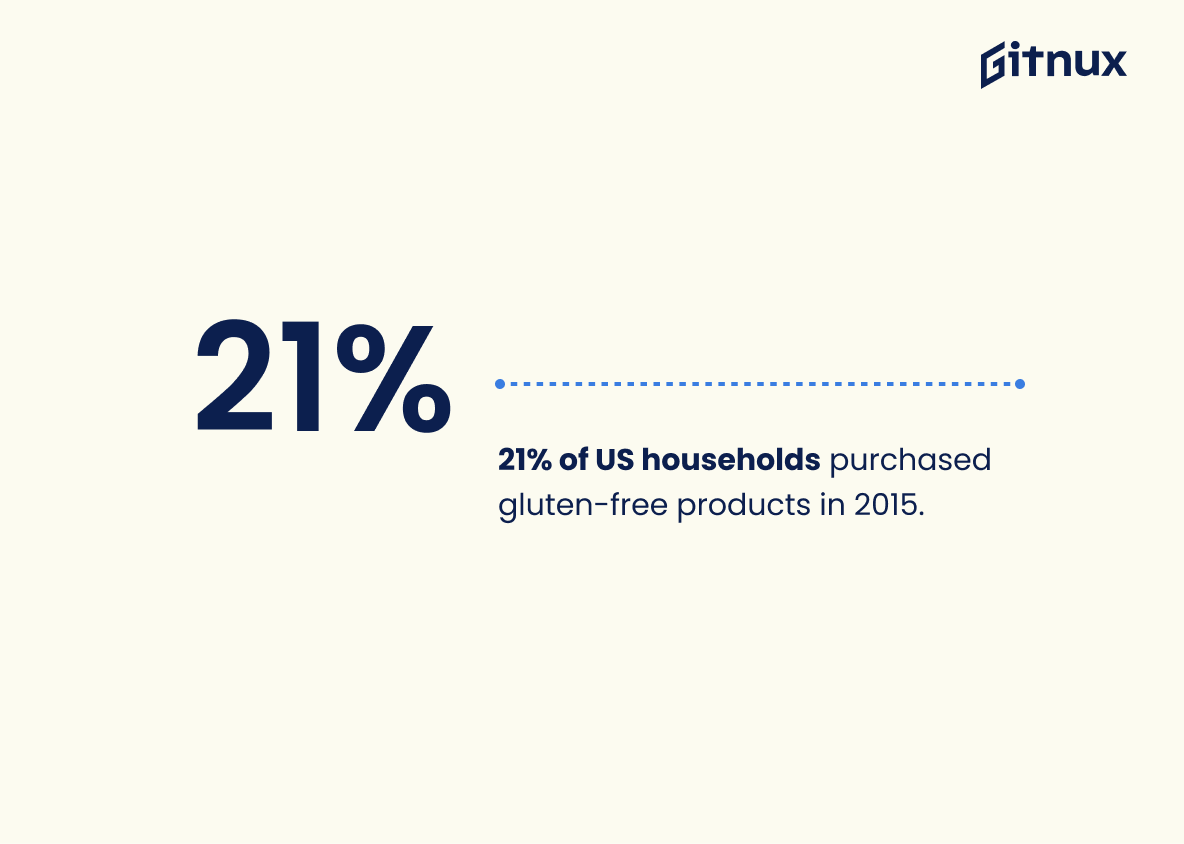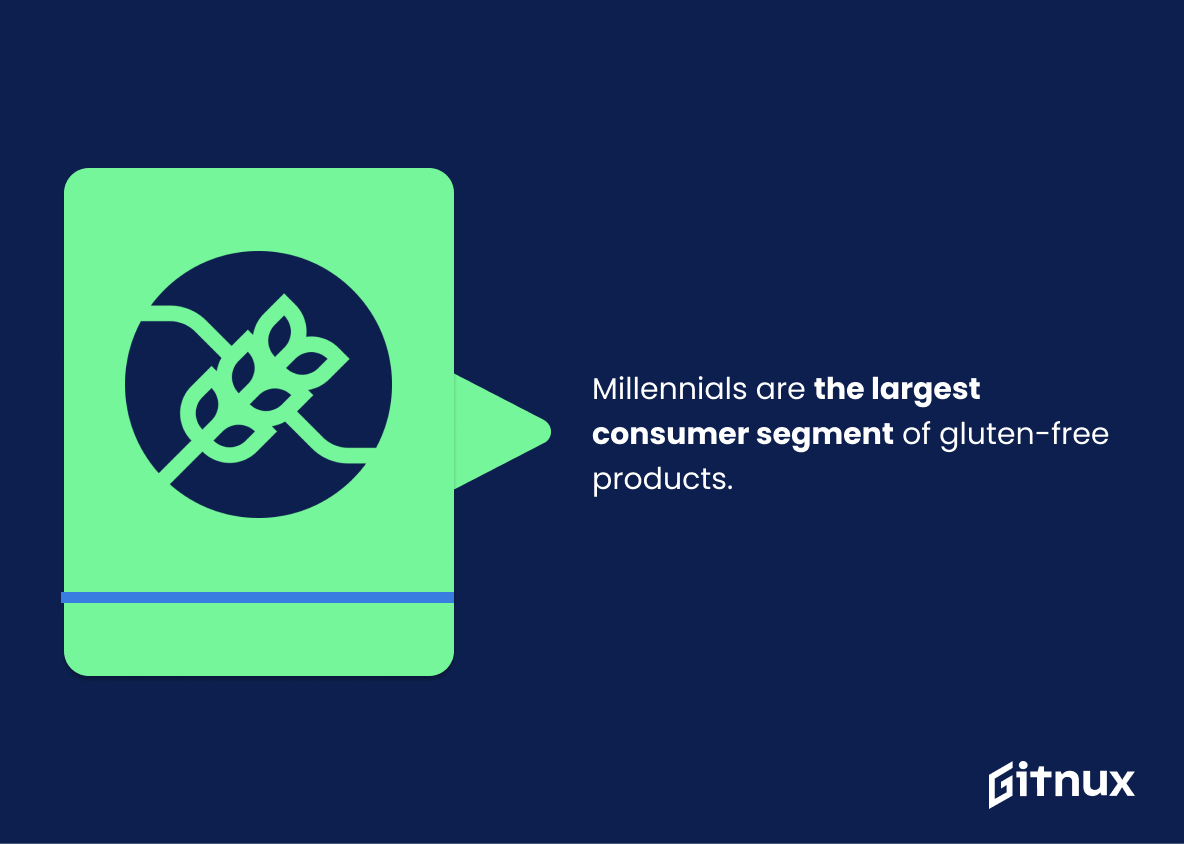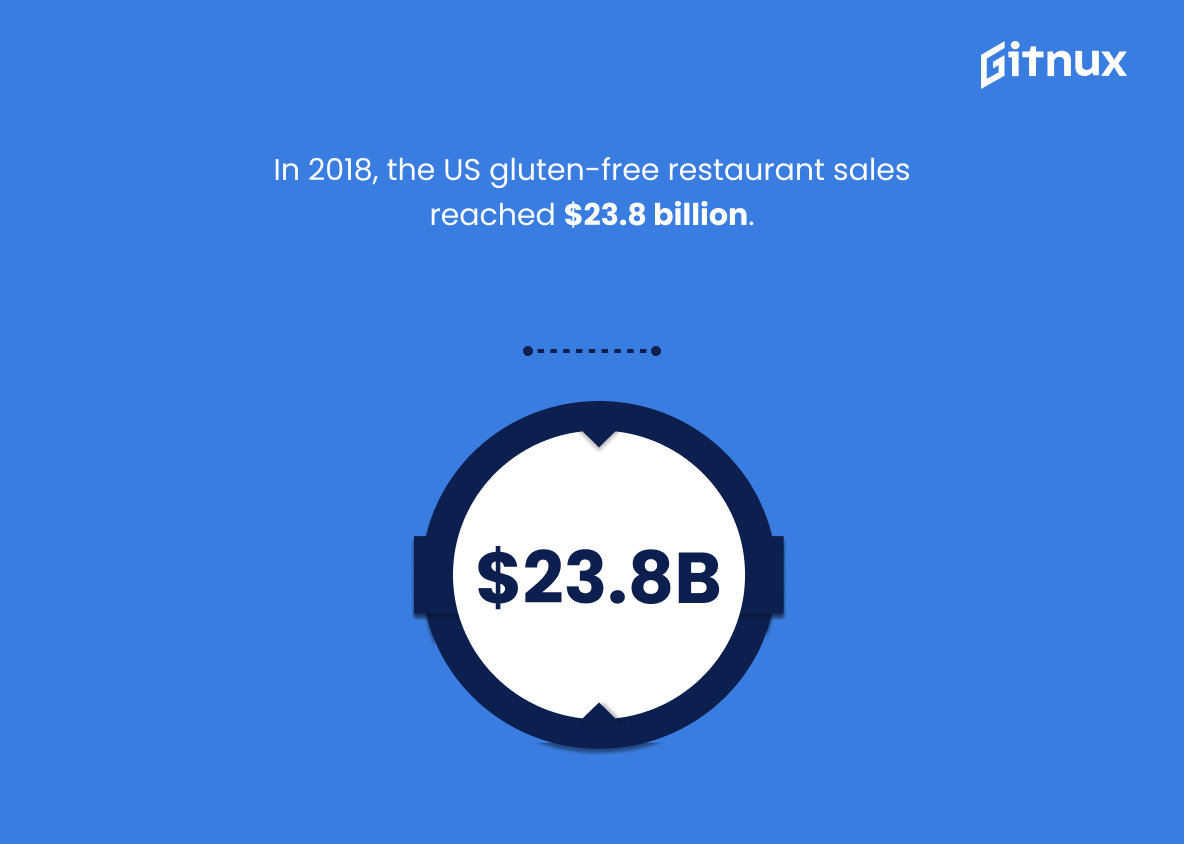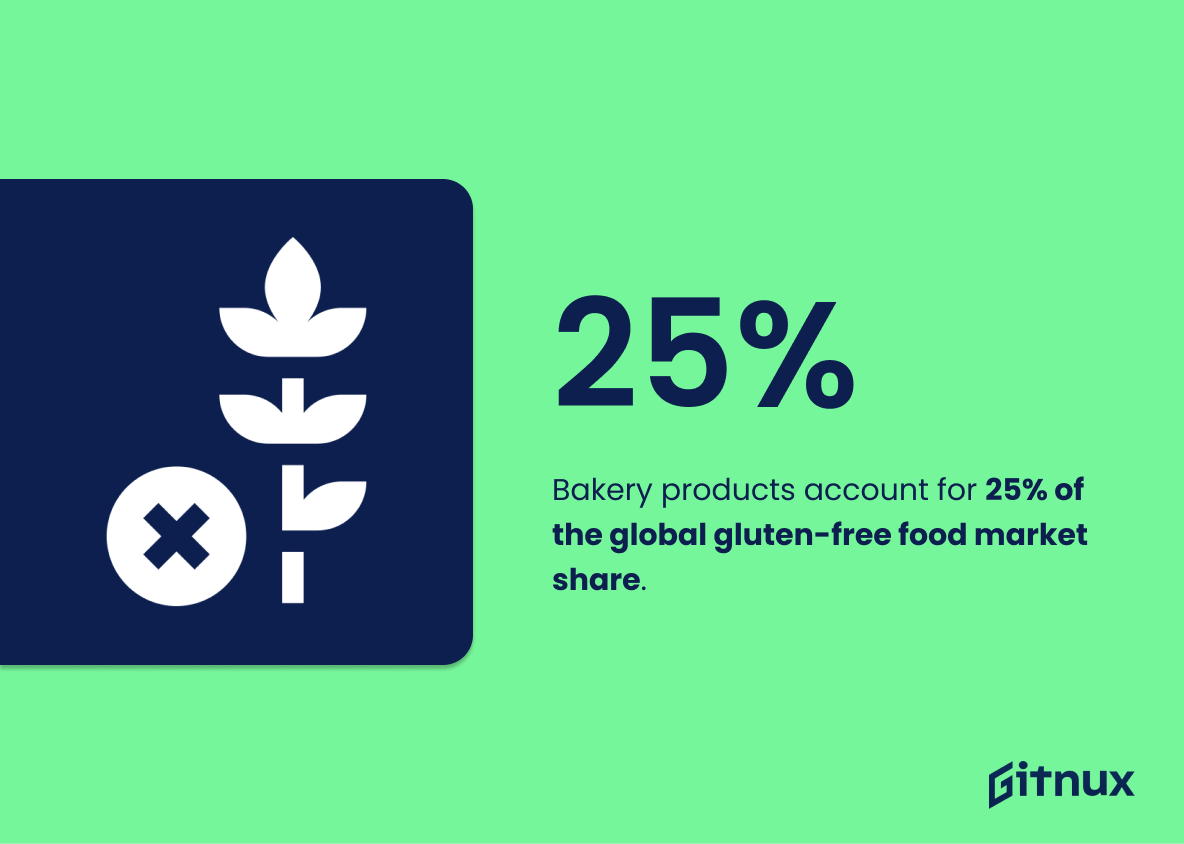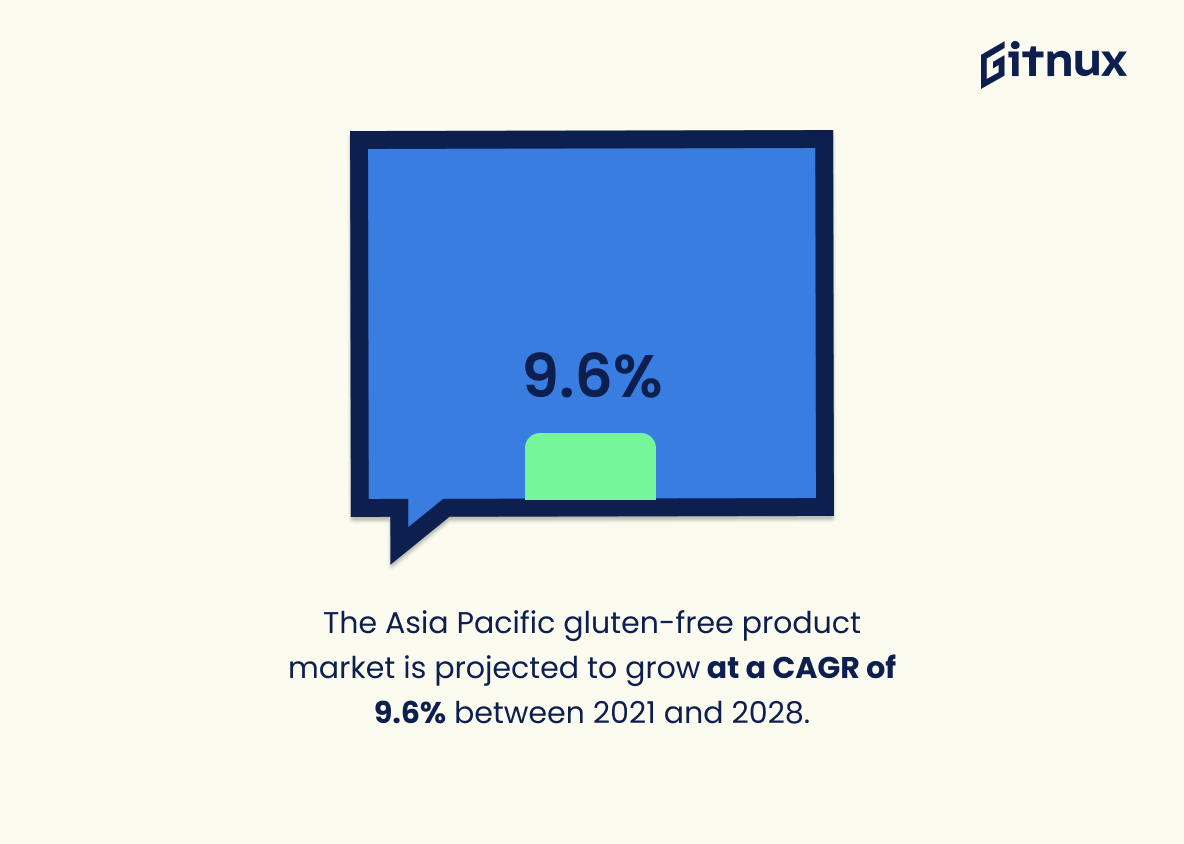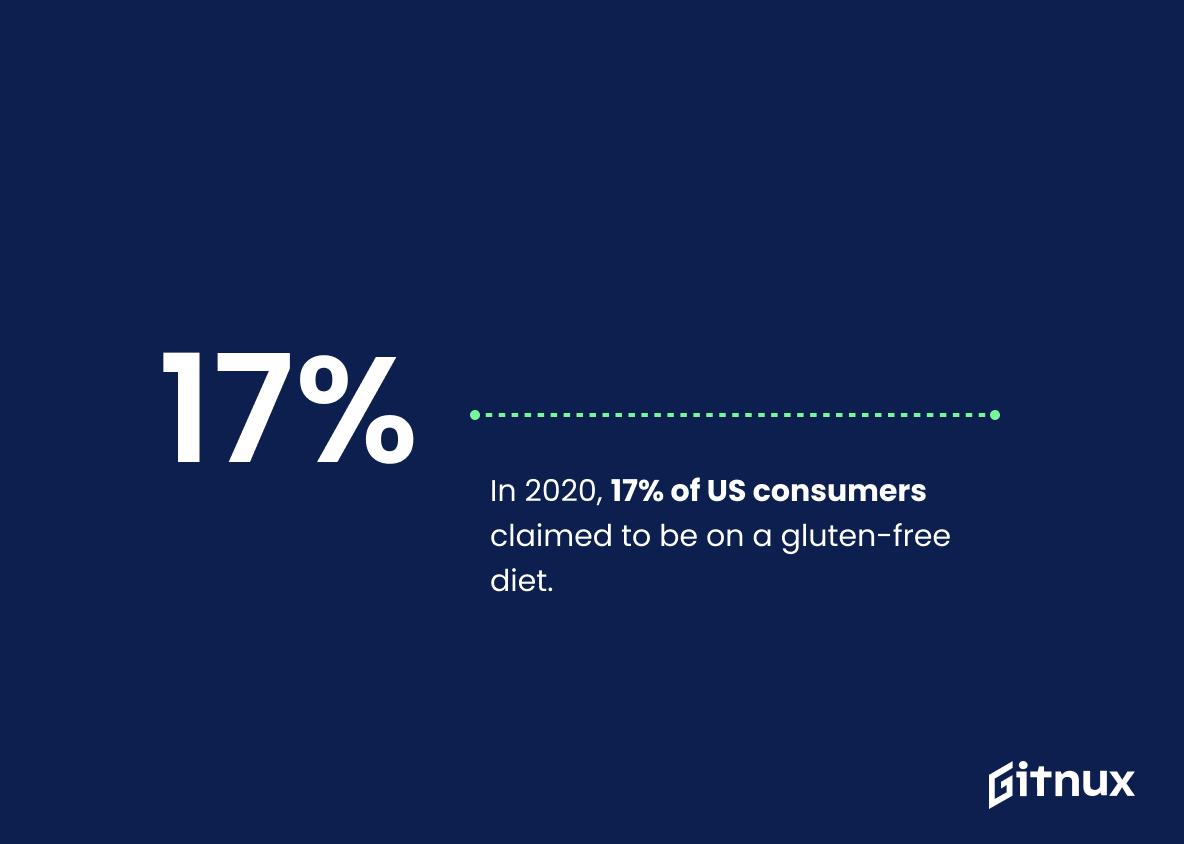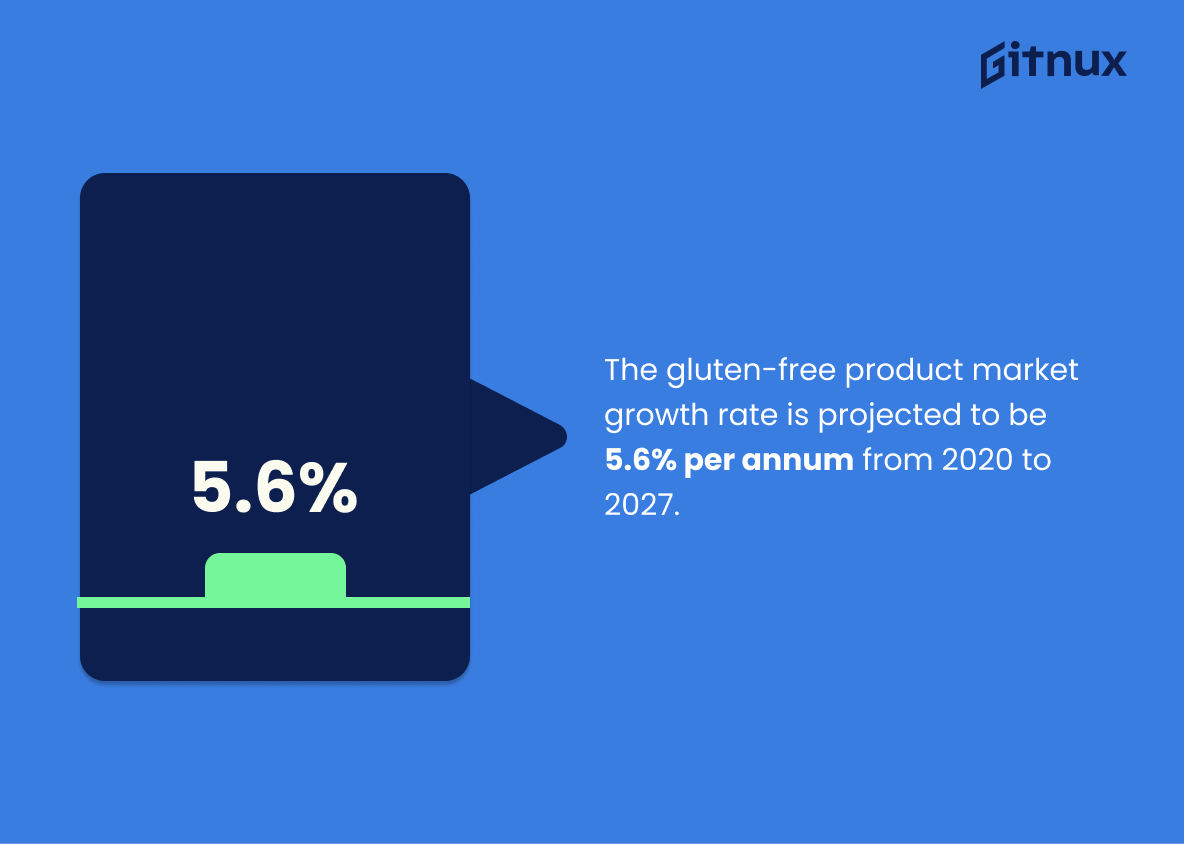Gluten-free diets have become increasingly popular in recent years, with an estimated 3.1 million Americans following a gluten-free diet and the global market for gluten-free products expected to be worth $43.65 billion by 2027. But what do we know about this growing trend? This blog post will explore some of the most interesting statistics related to the rise of gluten free foods, including how many people are on a gluten free diet, which countries consume the most GF products, who is driving sales growth and more. We’ll also look at data regarding celiac disease prevalence and other health conditions associated with avoiding wheat or barley proteins. So let’s dive into these fascinating facts about one of today’s hottest food trends.
This statistic is a powerful indicator of the growing trend of gluten-free diets in the United States. It shows that a significant portion of the population is actively choosing to avoid gluten, and that this trend is likely to continue in the future. This is an important point to consider when discussing the prevalence of gluten-free diets and the potential health benefits associated with them.
The gluten-free product market is expected to be worth $43.65 billion by 2027.
This statistic is a testament to the growing popularity of gluten-free products, indicating that the market is expected to experience significant growth in the coming years. It is a clear indication that the demand for gluten-free products is on the rise, and that the industry is likely to continue to expand in the near future. This is an important statistic to consider when discussing the current state of the gluten-free market and its potential for growth.
Gluten Free Statistics Overview
72% of Americans who follow a gluten-free diet are classified as “PWAGs” – people without celiac disease avoiding gluten.
This statistic is significant in the context of a blog post about Gluten Free Statistics because it highlights the fact that a large majority of people who follow a gluten-free diet do not have celiac disease. This indicates that there are other reasons why people are choosing to avoid gluten, such as personal preference or health concerns. This statistic can be used to further explore the motivations behind the growing trend of gluten-free diets.
In 2020, the global gluten-free food market was valued at $22.05 billion.
This statistic is a testament to the growing popularity of gluten-free foods. It shows that the demand for gluten-free products is on the rise, and that the market for these products is thriving. This is an important indicator of the changing dietary habits of people around the world, and it is a sign that gluten-free diets are becoming more mainstream.
In 2021, gluten-free sales were highest in North America, followed by Europe.
This statistic is a telling indication of the growing popularity of gluten-free products in the global market. It shows that North America is leading the way in terms of sales, with Europe following closely behind. This is a clear sign that the gluten-free trend is gaining traction and is here to stay. This is an important piece of information for anyone interested in the gluten-free market, as it provides insight into the current state of the industry.
Approximately 1% of the global population has Celiac disease.
This statistic is a powerful reminder of the prevalence of Celiac disease, and how important it is to be aware of the need for gluten-free diets. It serves as a reminder that gluten-free diets are not just a trend, but a necessity for many people around the world.
Gluten-free food sales have grown by 136% from 2013-2015.
This statistic is a testament to the increasing popularity of gluten-free food. It shows that more and more people are turning to gluten-free options, indicating that the trend is here to stay. This is an important statistic to consider when discussing the gluten-free movement and its impact on the food industry.
Around 18 million Americans have gluten sensitivity.
This statistic is a powerful reminder of the prevalence of gluten sensitivity in the United States. It serves as a stark reminder that gluten-free diets are not just a trend, but a necessity for millions of Americans. This statistic is a call to action for those who are unaware of the potential health risks associated with gluten consumption.
The gluten-free snacks segment is projected to reach $7.2 billion in 2023.
This statistic is a testament to the growing popularity of gluten-free snacks, indicating that the demand for these products is on the rise. It is a clear indication that the gluten-free lifestyle is becoming increasingly mainstream, and that more and more people are looking for gluten-free options when it comes to snacks. This statistic is an important one to consider when discussing the current state of the gluten-free market.
21% of US households purchased gluten-free products in 2015.
This statistic is a telling indication of the growing popularity of gluten-free products in the US. It shows that a significant portion of households have embraced the gluten-free lifestyle, suggesting that it is no longer a niche market but a mainstream trend. This is an important point to consider when discussing the current state of the gluten-free industry.
Millennials are the largest consumer segment of gluten-free products.
This statistic is significant in the context of a blog post about Gluten Free Statistics because it highlights the growing trend of Millennials choosing to purchase gluten-free products. It demonstrates that this generation is increasingly aware of the health benefits associated with a gluten-free diet and is actively seeking out these products. This is an important insight for businesses looking to capitalize on the growing demand for gluten-free products.
In 2018, the US gluten-free restaurant sales reached $23.8 billion.
This statistic is a testament to the growing popularity of gluten-free diets. It shows that more and more people are choosing to eat gluten-free, and that restaurants are responding to this demand by offering more gluten-free options. This is an important indicator of the changing dietary habits of Americans, and it is an important statistic to consider when discussing the prevalence of gluten-free diets.
Bakery products account for 25% of the global gluten-free food market share.
This statistic is a testament to the growing popularity of gluten-free bakery products, indicating that the demand for these products is on the rise. It is a clear indication that the gluten-free food market is expanding, and that more and more people are turning to gluten-free options for their dietary needs. This statistic is an important reminder that gluten-free food is becoming increasingly accessible and available to those who need it.
The Asia Pacific region is expected to see the fastest CAGR for the gluten-free product market at 9.6% between 2021 and 2028.
This statistic is a testament to the growing popularity of gluten-free products in the Asia Pacific region. It highlights the potential for businesses to capitalize on this trend and capitalize on the increasing demand for gluten-free products in the region. This could be a great opportunity for businesses to expand their reach and tap into a new market.
In 2020, 17% of US consumers claimed to be on a gluten-free diet.
This statistic is a telling indication of the growing trend of gluten-free diets in the US. It shows that more and more people are becoming aware of the potential health benefits of avoiding gluten, and are taking steps to do so. This is an important point to consider when discussing the prevalence of gluten-free diets in the US, and is a key statistic to include in a blog post about Gluten Free Statistics.
The gluten-free product market growth rate is projected to be 5.6% per annum from 2020 to 2027.
This statistic is a testament to the increasing popularity of gluten-free products, indicating that the demand for such products is on the rise. This is an important point to consider when discussing the gluten-free market, as it shows that the market is growing and that more people are becoming aware of the benefits of a gluten-free lifestyle. This statistic is a key indicator of the potential for growth in the gluten-free market, and is an important factor to consider when discussing the future of the industry.
Conclusion
The gluten-free market is growing rapidly, with an estimated 3.1 million Americans following a gluten-free diet and the global market expected to be worth $43.65 billion by 2027. The majority of those on a gluten-free diet are classified as PWAGs – people without celiac disease avoiding gluten – at 72%. In 2020, the global value of the industry was valued at $22.05 billion and sales were highest in North America followed by Europe that same year. Approximately 1% of the population has Celiac Disease while 83% remain undiagnosed or misdiagnosed with other conditions; 18 million Americans have been diagnosed with Gluten Sensitivity instead. Furthermore, consumers are willing to pay higher prices for these products due to their health benefits and convenience; millennials make up the largest consumer segment for this product type which accounts for 25% of all bakery products globally according to 2018 statistics from Mordor Intelligence Ltd.. Additionally, 17% US households purchased GF items in 2015 while 21%, or 7$2 billion dollars’ worth was spent on snacks alone in 2021 according to Acumen Research & Consulting LLC., making it one of fastest growing segments within this sector projected reach 43$.6 Billion by 2030 (ResearchAndMarkets). With such high demand comes innovation: female customers account for 60 percent share overall driving growth rate 5 .6 % per annum between 2020 –2027(ReportsnReports) As we can see from these facts and figures ,the future looks bright indeed.
References
0. – https://www.ncbi.nlm.nih.gov
1. – https://www.naturalproductsinsider.com
2. – https://www.acumenresearchandconsulting.com
3. – https://www.glutenfreeexpo.ca
4. – https://www.statista.com
5. – https://www.mordorintelligence.com
6. – https://www.forbes.com
7. – https://www.globenewswire.com
8. – https://www.grandviewresearch.com
9. – https://www.researchgate.net
10. – https://www.businesswire.com
11. – https://www.bakeryandsnacks.com
12. – https://www.medicalnewstoday.com
13. – https://www.celiac.org
14. – https://www.futuremarketinsights.com
15. – https://www.prnewswire.com
